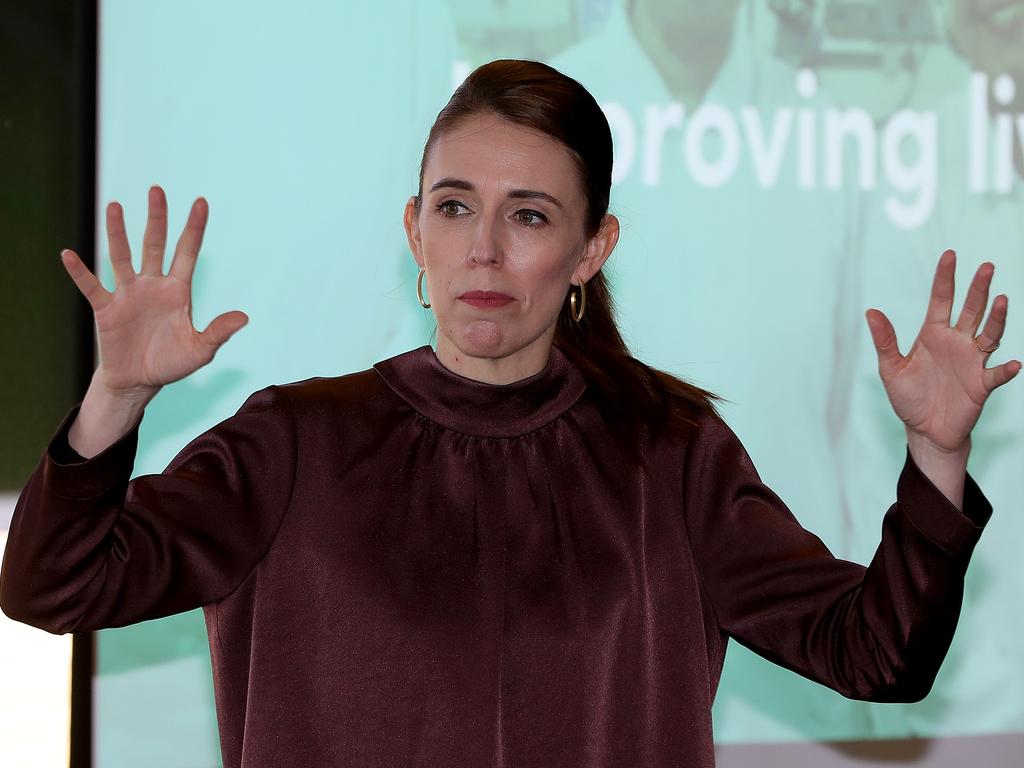Coronavirus Australia: Ruby Princess passengers on Qantas flight infected eight
Genomic sequencing has traced a cluster of COVID-19 cases that emerged in WA to a Qantas flight that carried scores of infected Ruby Princess passengers.
A coronavirus cluster that emerged in Western Australia has been genomically linked to an outbreak on board a Qantas flight that carried more than a dozen infected Ruby Princess passengers to Perth just hours after the virus-riddled cruise ship docked at Sydney Harbour. Genomic testing conducted by researchers at Notre Dame University in Fremantle has identified the Ruby Princess as the source of an outbreak on flight QF577 on March 19, with scientists revealing that 29 people were COVID-positive while on board the five hour flight.
At least eight people – possibly up to 11 – caught the virus while on board the flight, which may have been carrying a potential superspreader among the plane’s 243 passengers.
About 60 cruise ship passengers were on the plane, almost half of whom had arrived in Sydney seven hours earlier on board the ill-fated Ruby Princess cruise ship.
Of the 28 Ruby Princess passengers on board the flight, 13 were carrying the virus and 11 were infectious. Out of 30 Ovation of the Seas passengers, who had arrived in Sydney on March 18, four had the virus and one was infectious.
Qantas Medical Director Ian Hosegood said the revelation was “deeply frustrating”, given that the airline wasn’t told cruise ship passengers were on QF577 until two days after the flight.
“We had no idea that at least 60 passengers had come off the Ruby Princess and other ships where COVID was already spreading,” he said. “Had we known, they would have been stopped from travelling.”
He said Qantas asked the federal Department of Health “repeatedly” for a list of passengers who were travelling by air in an effort to stop the virus from spreading on Qantas planes.
“We were told by the Department of Health that the manifest could not be provided for privacy reasons,” he said.
“Ultimately, what happened is deeply frustrating for an airline that takes the health and safety
of our customers and crew so seriously.”
The researchers’ findings, published in the Emerging Infectious Diseases journal, found that five passengers who caught the virus on the flight had noticed people were coughing.
It was also possible a “superspreader” had been seated in the plane’s middle section, where every person who caught the virus on board the flight was seated, the researchers noted.
Four people who contracted the virus on the flight commenced their journeys from different US cities, arriving at Sydney Airport on March 19 after an overnight flight from Los Angeles.
Laboratory results matched that group’s virus to the cruise ship strain, which was not circulating in the US at the time of the flight.
The Ruby Princess cluster resulted in 28 deaths and more than 1000 infections nationwide, becoming Australia’s biggest source of infections during the first wave of the pandemic.
“The Ruby Princess Inquiry found there was a series of errors that led to a large group of infected passengers getting off the Ruby Princess and mixing in the community,” Dr Hosegood said. “It’s fair to say a lot of lessons have been learned.”
Last month, a report into the disaster found NSW Health made “serious” and “inexcusable” errors in their decision to allow 2700 passengers on the ship to disembark, despite more than 100 of them displaying symptoms of coronavirus, and three testing positive the next day.







To join the conversation, please log in. Don't have an account? Register
Join the conversation, you are commenting as Logout